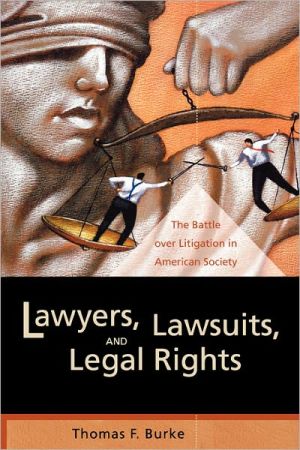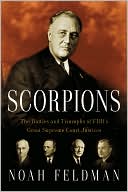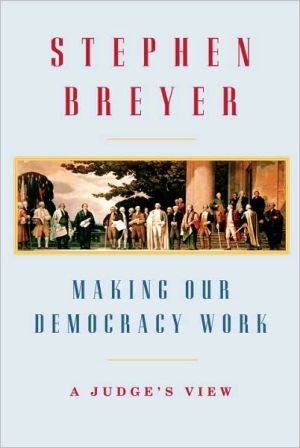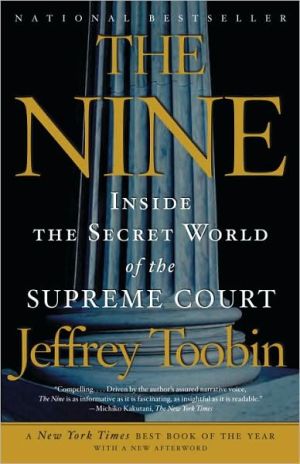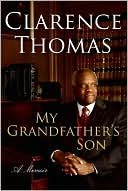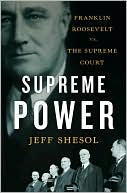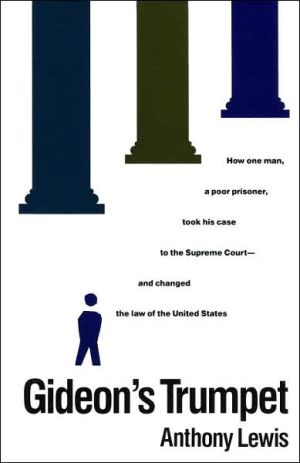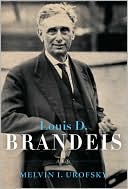Lawyers, Lawsuits, and Legal Rights: The Battle over Litigation in American Society
Lawsuits over coffee burns, playground injuries, even bad teaching: litigation "horror stories" create the impression that Americans are greedy, quarrelsome, and sue-happy. The truth, as this book makes clear, is quite different. What Thomas Burke describes in Lawyers, Lawsuits, and Legal Rights is a nation not of litigious citizens, but of litigious policies—laws that promote the use of litigation in resolving disputes and implementing public policies. This book is a cogent account of how...
Search in google:
"Burke drills deep into America's unique culture of litigation and is rewarded with a powerful insight: it is not the public or even lawyers that are so darn litigious, but American law itself. This meticulous, dispassionate book stands not only to advance the debate but—I hope—to reshape it."—Jonathan Rauch, author of Government's End: Why Washington Stopped Working "Lawyers, Lawsuits, and Legal Rights is a fascinating study of the American penchant for public policies that rely on lawsuits to get things done. Burke's analysis is insightful and original. This book compellingly shows that litigious policies have deep roots in our Constitution, culture, and politics."—Charles Epp, author of The Rights Revolution: Lawyers, Activists, and Supreme Courts in Comparative Perspective"Burke's authoritative book demonstrates that the highly litigious American system is not an isolated anomaly but in fact fits in with deeply-rooted elements of American political culture. Where citizens of other countries rely on expert or bureaucratic judgment to resolve disputes, Americans turn to the courts. Equally novel and compelling, Lawyers, Lawsuits, and Legal Rights marshals an impressive set of evidence and delivers a refreshingly well-written look at the state of American litigation."—Frank R. Baumgartner, co-author of Agendas and Instability in American Politics Jonathan Rauch Burke drills deep into America's unique culture of litigation and is rewarded with a powerful insight: it is not the public or even lawyers that are so darn litigious, but American law itself. This meticulous, dispassionate book stands not only to advance the debate but-I hope-to reshape it.
Lawyers, Lawsuits, and Legal Rights\ The Battle over Litigation in American Society \ \ By Thomas F. Burke \ University of California\ Copyright © 2002 Regents of the University of California\ All right reserved.\ ISBN: 0-520-22727-1 \ \ \ Chapter One\ The Battle over Litigation \ Litigation is under siege from many directions, but as I argued in the introduction, some attacks turn out to be more significant than others. While tort reformers, for example, are aimed simply at reducing the volume and cost of litigation, other antilitigation efforts can eradicate whole species of lawsuits. It is these more sweeping campaigns, in which policy makers are led to ponder the merits of litigation versus other problem-solving devices, that teach the most about the roots of America's distinctively litigious public policy style. In focusing on two of the most visible components of the attack on litigation, tort reform and alternative dispute resolution, commentators have missed broader, more theoretically significant patterns. A review of the many struggles over litigious policies in American politics and the political forces involved in the litigation debate puts the individual battles in context.\ The Attack\ It would be arbitrary to pinpoint a moment when the attack on litigation began. There have always been antilitigation impulses and even antilitigation reforms in the United States. Yet as late as the 1960s, in the midst of an enormous expansion in litigious policies, there was little mention of litigiousness as a major problem in American life. Indeed, within the legal profession the major criticism of the legal system was that it was inaccessible and so unavailable to poor and middle-class people. More litigation, not less, was needed. At some point in the 1970s, however, a shift began. Concerns about accessibility faded, and misgivings about litigation took center stage. A wide-ranging debate over the costs and benefits of litigation began.\ Within the bar an indicator of the shift was the 1976 Roscoe Pound Conference on the Causes of Popular Dissatisfaction with the Administration of Justice. Number one among the causes cited by the participants-federal judges, elite lawyers, and law professors-was "overload," both in the sheer number of cases filed and in the expectations people had about the problem-solving capacities of courts. "The American public today perceives courts as jacks-of-all-trades, available to furnish the answer to whatever may trouble us," said Simon Rifkind, a corporate lawyer and former federal judge. As a result, courts were carrying a "backbreaking burden." Others complained of the expanding length and complexity of litigation. With the growth of procedural rights for defendants, criminal cases "never seem to end," said Walter Schaefer, a judge. Francis Kirkham, a corporate lawyer, claimed that in some kinds of civil litigation "discovery knows no bounds" and that class action lawsuits in the federal courts were "reaching flood stage." Echoing the aquatic metaphor, U.S. Attorney General Edward Levi said that courts were "deluged with business." The problem of overload was so serious, claimed Solicitor General Robert Bork, that "the integrity of the federal system is threatened." Kirkham worried whether the nation was "retaining the capacity to achieve justice by rational means."\ The Pound Conference participants suggested a myriad of solutions to the problem of overloaded courts, proposals that would set much of the agenda for antilitigation reformers over the next two decades. Contrary to their image as lawsuit mongers, the elite lawyers at the conference took a very critical stance toward litigation.\ Beginning in the 1970s, a new skepticism about the utility of litigation also arose among academics. Researchers in law and the social sciences argued that courts lacked the capacity to be good policy makers and that litigation wasn't a very effective way to make society more just. Although these themes were hardly new novel, they took on particular poignancy coming after two decades in which reformers had turned repeatedly to litigation as a tool of reform. Indeed, some of the criticisms of litigation came from those who had eagerly accepted the premises of the legal reform model. Gerald Rosenberg went to law school hoping to become a social reformer but discovered that social change through constitutional litigation was a Hollow Hope. Radical lawyers in the critical legal studies movement, some of them veterans of civil rights struggles, analyzed the limits of liberal legal reform; critical race theorists, though more sympathetic to rights laws, joined in. Meanwhile communitarian critics of liberalism articulated yet another set of complaints about the influence of litigation on American life. Mary Ann Glendon, for example, argued that American politics was overly legalistic, dominated by "rights talk" that polarized citizens and oversimplified issues. Economists condemned litigation for its high costs and impact on American competitiveness. Conservatives and a few liberals criticized the Warren Court's expansion of procedural rights in the criminal justice system. Even many tort law professors, a group that had promoted the liberalization of liability in the 1950s and 1960s, were by the 1980s deeply troubled by the shortcomings of litigation as a means of compensating injury. Echoing their criticisms was a flurry of research on civil litigation that began in the 1980s, much of it supportive of antilitigation reforms.\ By the 1990s antilitigation reform even became the stuff of national politics, thanks largely to the efforts of Vice President Dan Quayle. During the Bush administration Quayle developed litigation reform into a political issue, and mainly through his rhetorical attacks it occasionally popped into the national spotlight.\ The apex of Quayle's anti-litigation campaign was his 1991 speech to the American Bar Association (ABA). Applauding Walter Olson's The Litigation Explosion and estimating that tort litigation cost over $300 billion dollars each year, Quayle called the civil justice system a "self-inflicted competitive disadvantage." In one of the more widely discussed sections of his speech, Quayle asked, "Does America really need 70 percent of the world's lawyers? Is it healthy for our economy to have 18 million new lawsuits coursing through the system annually?" As a step toward remedying these conditions, Quayle proposed fifty antilitigation reforms recommended by the President's Council on Competitiveness, which he chaired.\ Rising to the challenge, John Curtin, president of the ABA, said his organization was willing to consider the proposals, but "Anyone who believes a better day dawns when lawyers are eliminated has the burden of explaining who will take their place. Who will protect the poor, the injured, the victims of negligence, the victims of racial discrimination, and the victims of racial violence? ... Lawyers are the simple yet essential means by which people seek to vindicate their rights and we must not foreclose that means." Quayle had not actually proposed the extermination of lawyers, so Curtin's response was a bit of a non sequitur. But the exchange was dramatic and drew media attention. Sophisticated critics, besides noting Quayle's use of dubious statistics, pointed out that Quayle, like Curtin, was shadowboxing: his reforms were far less sweeping than his rhetoric suggested. Many were minor procedural measures that the ABA itself had supported; others sounded major but on inspection turned out to be narrow in scope. Nonetheless, a splash was made.\ None of Quayle's suggestions found its way into federal legislation, though President Bush did sign an executive order implementing some of the procedural ideas. But in legal reform Quayle and Bush found an agreeable, albeit minor, political issue, one that has since become a staple of Republican politics. In the presidential election of 1992 President Bush's first television ad mentioned "legal reform," and his campaign criticized Bill Clinton and the Democratic Party for accepting massive contributions from plaintiff lawyers. Republicans even picketed Bill Clinton with signs reading "Stop the Trial Lawyers' Takeover of the White House." Newt Gingrich made "Common Sense Legal Reform" the ninth plank in his Contract With America and pushed various tort reform bills through the House. In one of the highlights of his otherwise uninspired 1996 presidential campaign, Robert Dole joked after falling from a stage during a campaign event that trial lawyers had begun calling him on his cell phone even before he hit the ground. And George W. Bush, proud to be an enemy of plaintiff lawyers, pointed to tort reform, while campaigning for the presidency in 2000, as one of his major accomplishments as governor of Texas. Dole and both Bushes have mentioned litigation reform in their televised debates, and the Republican platform since 1992 has contained antilitigation language.\ Although their antilitigation rhetoric sweeps broadly, these politicians are in fact mainly focused on one species of lawsuit, the personal injury claim. They tend to ignore other, more common forms of litigation-over contracts, property disputes, and family issues. Business-to-business contract disputing, for example, is at least as important a source of lawsuits as tort, but in the litigation debate this is obscured. In 2000, tort lawsuits constituted 00 percent of the case load of a sample of state courts; contract cases amounted to 00 percent. Yet when politicians, pundits, and journalists criticize "litigiousness," they are speaking almost invariably about personal injury lawsuits.\ Why does tort litigation receive such a disproportionate share of attention? The simplest explanation is that those on the receiving end of tort lawsuits-business groups, governments, and professional organizations-have the means and the incentive to publicize their discontents. These powerful interests have set the agenda both for politicians and the media. Other forms of litigation-for example, contractual disputes-have business interests on both the giving and receiving ends, creating a much more ambivalent attitude. Moreover, many common types of litigation-family disputes, for example-don't involve business interests at all. It is only those forms of litigation in which powerful interests appear solely as defendants-tort, civil rights, and environmental lawsuits-that are most visibly attacked.\ Even in this grouping, however, tort litigation seems to get the lion's share of the attention. Aside from the interests behind it, there seems to be a special resonance to complaints about personal injury law. David Engel has argued that tort litigation stories serve as symbols of community disintegration in a way that anecdotes about, for example, contract disputes cannot. Engel studied attitudes toward tort law in a rural county in the Midwest. In the view of Engel's subjects, plaintiffs in tort lawsuits deserved special scorn because they had used the coercive powers of the state to get money they did not earn from defendants who never agreed to assume responsibility for their injuries. Thus for Engel's subjects, as for many Americans, stories about tort litigation symbolize the decline of personal responsibility in society. Moreover, tort stories are dramatic and easily understood, making them easily digestible fodder not just for everyday gossip but also for the news and entertainment media. The story of Stella Liebeck, who had the infamous encounter with McDonald's coffee, radiated through public discourse because it dramatically illustrated what "everyone knows"-that Americans routinely sue others for accidents they themselves are responsible for, that big corporations are excessively punished because they are "big pockets," and that tort plaintiffs are overcompensated by runaway juries. Indeed, aspects of the Stella Liebeck story that were inconvenient to this portrayal-such as the fact that Liebeck eventually settled for roughly one-fifth of the widely publicized $2.9 million jury verdict, that her burns were horrifyingly severe, or that McDonald's coffee had previously scalded hundreds-were widely ignored.\ The notoriety of tort litigation, combined with the powers of persuasion of corporate and professional interests, has put personal injury lawsuit reform at the top of the antilitigation agenda. Yet the range of antilitigation politics sweeps much more broadly than tort suits. Business-to-business disputing, though not the subject of television sitcoms or Republican platform planks, has been the target of several antilitigation efforts, especially alternative dispute resolution, discussed below. Indeed, some of the more obscure antilitigation reforms, though not the stuff of advertising campaigns or presidential speeches, are among the more significant.\ Four Types of Antilitigation Efforts\ There are a vast array of antilitigation efforts spanning varied policy areas and levels of government, but they can be usefully divided into four basic forms: (1) discouragement, attempts to discourage plaintiffs and so reduce litigation; (2) management, attempts to make the disputing process more efficient and harmonious; (3) replacement, attempts to replace litigation with some other problem-solving device; and (4) resistance, opposition to new forms of litigation (see Table 1.1). Each form creates a distinctive politics. Of the four types, discouragement and management efforts have been the most visible, garnering the most media attention-and the most hyperbolic rhetoric. Yet as I argued in the introduction, replacement efforts and the battles they create expose more fully the roots of America's distinctively court-centered public policy style because they represent more fundamental attacks on litigation as a problem-solving device.\ The Partisan Politics of Discouragement\ Discouragement reforms take the most familiar and straightforward route to limiting litigation: they aim to discourage plaintiffs from bringing lawsuits. They do this by making lawsuits either harder to bring, harder to win, or less rewarding for the plaintiff. The politics of discouragement is similarly straightforward. Groups aligned with plaintiffs fight groups aligned with the defendants. Discouragement battles are thus highly partisan, with most Republicans on the antilitigation side and most Democrats lined up with the plaintiffs. These are struggles over distributional justice-who gets what-with dollars and the resources of the judiciary at stake. Proponents do not typically question the utility of litigation itself but argue that plaintiffs with weak claims are abusing the legal system.\ The most prominent of all discouragement efforts, indeed of all antilitigation efforts, is the tort reform movement. A "tort" is an injury. Plaintiffs in tort cases seek monetary compensation for their injuries, punishment for their injurers, and some reassurance that injury-producing conduct will be deterred.\ \ (Continues...)\ \ \ \ Excerpted from Lawyers, Lawsuits, and Legal Rights by Thomas F. Burke Copyright © 2002 by Regents of the University of California . Excerpted by permission.\ All rights reserved. No part of this excerpt may be reproduced or reprinted without permission in writing from the publisher.\ Excerpts are provided by Dial-A-Book Inc. solely for the personal use of visitors to this web site. \ \
AcknowledgmentsIntroduction11The Battle Over Litigation222The Creation of a Litigious Policy: The Americans with Disabilities Act603A Failed Antilitigation Effort: The Struggle over No-Fault Auto Insurance in California1034A Shot of Antilitigation Reform: The Vaccine Injury Compensation Program1425Understanding the Litigation Debate171Notes205Index261
\ Jonathan RauchBurke drills deep into America's unique culture of litigation and is rewarded with a powerful insight: it is not the public or even lawyers that are so darn litigious, but American law itself. This meticulous, dispassionate book stands not only to advance the debate but-I hope-to reshape it.\ \ \ \ \ Charles EppLawyers, Lawsuits, and Legal Rights is a fascinating study of the American penchant for public policies that rely on lawsuits to get things done. Burke's analysis is insightful and original. This book compellingly shows that litigious policies have deep roots in our Constitution, culture, and politics.\ \ \ Burke's authoritative book demonstrates that the highly litigious American system is not an isolated anomaly but in fact fits in with deeply-rooted elements of American political culture. Where citizens of other countries rely on expert or bureaucratic judgment to resolve disputes, Americans turn to the courts. Equally novel and compelling, Lawyers, Lawsuits, and Legal Rights marshals an impressive set of evidence and delivers a refreshingly well-written look at the state of American litigation.\ \
